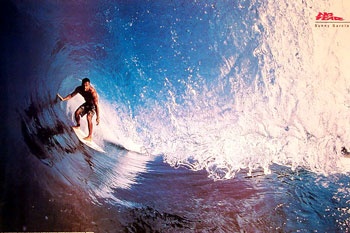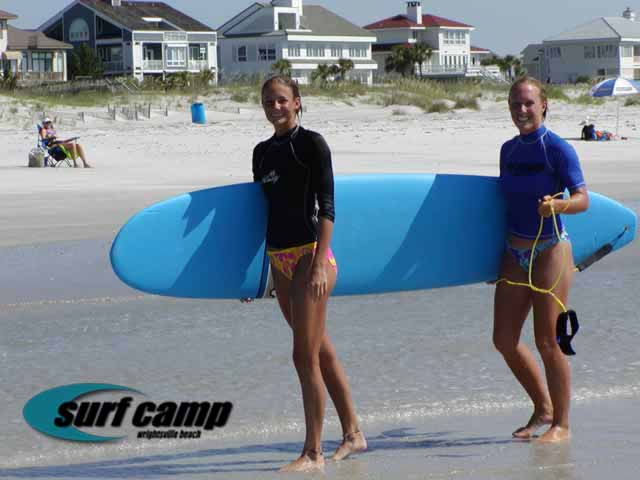

|
Surfing is a skill that is best learned by observing and practice. However, I found that
there are a few fundamental skills I should know in order to start out on the right track.
As a beginner, you should try not to start out in shallow reef breaks, lined-up point breaks, or small but heavy shorebreak crunchers. Make sure you've properly waxed your board before attempting to surf. Before getting into the water, put your leash around your back leg. Go into the water and lie on the board, chest down, with your head facing the nose. The nose should just be barely out of the water. Distribute your weight so that your chest is on the thickest part of the board, since itís the heaviest and thickest part of your body. |
|

|

|
|
Paddle out into the water by alternating your arms, just as if you are swimming freestyle.
Keep your chest up so that the water runs between you and the board. Make sure youíre not
too far back on the board when paddling, as this is one of the most common mistakes beginner
surfers make. Just as the wave is about to hit you, roll over on your back, pull the nose of
the board down, and roll back up. This step is known as the turning turtle.
Duck diving, which is the next step, is a bit trickier than it seems. It involves pushing the nose down with one knee, sinking the front of the board into the water, and following it with your body. The key is to use the power of the wave to help accomplish this step by pushing the board into the water as deep as possible while maintaining your momentum and angling the board to what you perceive as the other side of the break. Surfing takes lots and lots of practice to master. The bottom line is to remember to have fun with it and be safe.http://et.sdsu.edu/theffernan/surfing/home.htm or "http://www.gowersurfing.com/faq/beginners.htm" |
|
SURFING